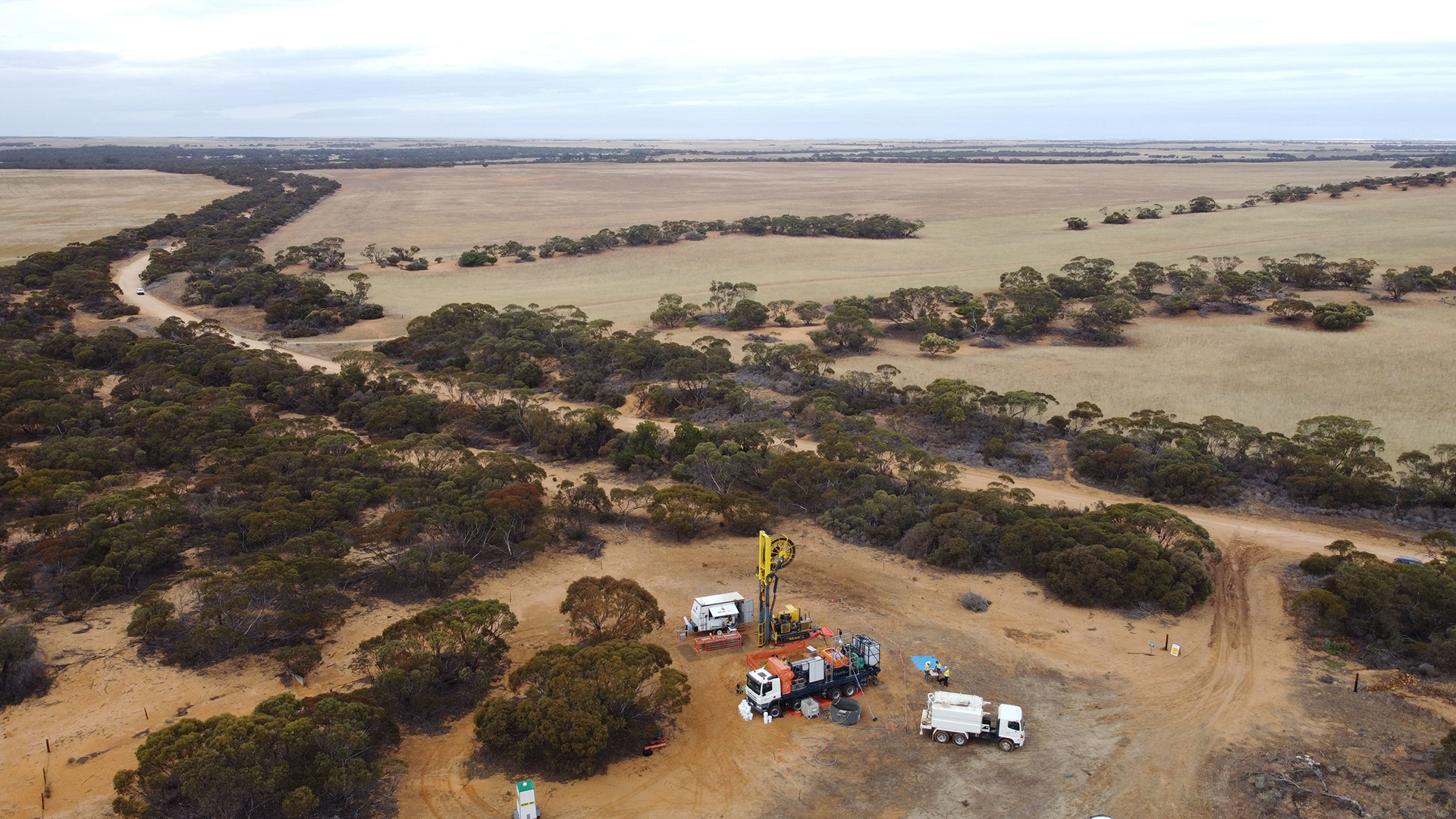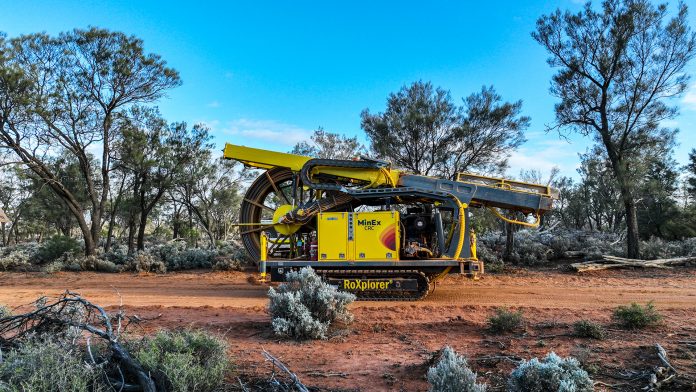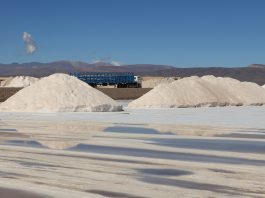David Giles, Chief Scientific Officer of MinEx CRC, explains more about the collaboration working to accelerate critical mineral exploration and development in Australia.
Based in Western Australia, MinEx CRC is the world’s largest mineral exploration collaboration designed to bring together industry, government, and organisations to secure Australia’s mineral development future. The collaboration is focused on a new set of exploration tools and new ways to deploy those tools that recognise the fundamental importance of collecting quantity and quality data from the subsurface.
MinEx also focuses on developing safer, more productive, and environmentally-friendly drilling methods to discover and drill out deposits. This includes work on coiled tubing (CT) drilling technology and innovations in diamond and reverse circulation (RC) drilling techniques aimed at improved drilling optimisation and automation.
To learn more about the collaboration, its current aims and objectives, and its plans for the future, The Innovation Platform spoke to David Giles, Chief Scientific Officer of MinEx CRC.
Can you tell us more about MinEx CRC, why it was formed, and its key aims and objectives?
MinEx was launched as a direct response to declining mineral exploration success and reduced mineral exploration investment in Australia in the two decades leading up to our successful Cooperative Research Australia (CRC) bid in 2018. In the mid-1990s, around one quarter of total global mineral exploration expenditure occurred in Australia, but this number had dropped to about one eighth by 2015.
Investment that had previously come to Australia was moving elsewhere. This could be attributed to the fact that exploration in Australia dating back to the mid-19th century had been so successful. As a result, the easier-to-find deposits that occur at or close to the Earth’s surface had all been discovered and we entered a period of diminishing returns within that ‘shallow’ search space. The only solution was to dig deeper.
However, going deeper is technically challenging, expensive and has greater inherent uncertainty – meaning greater risk. Explorers were choosing to shift investment to less well explored jurisdictions (although often with greater sovereign risk) where there may still be undiscovered shallow deposits. The aim of MinEx is to overcome the technical challenges to make critical mineral exploration more efficient, reduce costs, and reduce the uncertainty of deep mineral exploration to unlock around 70% of the mineral-endowed Australian continent to systematic exploration.
Alongside this motivation is something more profound on a global scale – our need to discover and develop more of the mineral deposits required to resource our transition to a low-carbon economy. We will need to find and mine more copper in the next 25 years than ever before just to keep up with current demand, let alone the additional copper needed for electric vehicles and wind turbines. The challenge for lithium (for batteries) and rare earth elements (for magnets in electric motors) is even greater. The lead time for discoveries to become producing mines is longer than people think, averaging at 13 years, so investment in making those discoveries is urgent.
Although the rationale is different, the appropriate response is the same. We must overcome technical challenges to make critical mineral exploration more efficient, reduce the cost, and reduce the uncertainty of critical mineral exploration so that we can increase the probability of success and reduce the discovery-to-production timeline.
MinEx CRC’s take on this challenge is informed by a simple truth: to discover mineral deposits, and to define and characterise them so that they can be mined, drilling is required. The best long-term correlation to mineral discovery (in terms of input) is total metres drilled. It is often stressed that the success rate for each hole drilled is relatively low. Whilst this is true, it should not be a disincentive. Zero drilling means zero discoveries and more drilling typically equates to more discoveries – it is as simple as that. Our task is to make drilling more efficient, cheaper, safer and reduce its environmental impact so that we can afford (in terms of money, time, health, and sustainability) to drill more. This includes the attendant sampling (quality, representative, accurately located rock samples), sensing (measurement of physical rock properties and geophysical parameters within the drill hole) and downstream analyses (e.g., to discern subtle signatures of alteration or the age and geological history of the rocks intersected) that are critical to systematic mineral exploration. Our three research programmes encompass this, including:
- Drilling (new drilling technologies and improving conventional technologies);
- Data from drilling (focused on data collected and analysed while drilling or at least during a drilling campaign); and
- The National Drilling Initiative.
How are you supporting the development of more efficient, safe, and environmentally-friendly drilling methods?
There are two key areas in our drilling research and development (R&D).
Firstly, we are working to improve the efficiency and reduce the cost of conventional drilling platforms, through a combination of constant measurement and feedback to control and optimise the entire drilling process. This has required us to develop a detailed understanding of the fundamental physical processes involved in the various types of drilling and how those processes are impacted by the operating parameters of the drill rig. Our research team designs and deploys sophisticated rig monitoring systems that can be used to ‘tune’ the rig toward optimum operating parameters. For example, by altering the axial force to achieve the best balance between drilling rate and drill bit wear, or by altering the viscosity of the drilling fluid to ensure hole stability and minimise fluid losses. The ultimate expression of this work will be automated drilling systems – which will have the dual impact of efficiency and safety. Along the way to automation, manifold improvements need to be made.
In addition, we have designed and built a radically different looking coiled tubing drilling platform for the purpose of mineral exploration drilling. The patented design places the coil of hollow steel tubing directly above the drill hole, which reduces the number of bends required to straighten (into the hole) and rewind (coming out of the hole) the coil, thus increasing coil life. Coiled tubing drilling has been used for decades in the oil and gas industry, but mostly for technical and maintenance tasks in existing boreholes or for drilling through soft rocks. Our challenge was to adapt this type of drilling for mineral exploration in a variety of ways, including by reducing the size, reducing the cost, increasing penetration rates in hard rocks, simplifying operations, collecting high-quality samples, and enabling real-time measurement of downhole rock properties. A key component of the drilling platform is the hydraulic processing system (HPS) which sits alongside the drill rig. The HPS is a truck mounted collection of pumps, pipes, sieves, filters, and centrifuges that incorporates the fluid management (monitoring, cleaning, and dosing) and solids sampling functions of the drilling operation. The HPS is unique to the MinEx drilling platform and did not exist until it was conceived, designed, built, and commissioned by our drilling engineers from early 2020 to 2021.

What did 2022 look like for your work?
Last year was very busy for us. We kicked off the second part of our three-year phase R&D programme. We are using this phase to move our technologies closer to being market-ready with a focus on field trials. Our novel coiled tubing drilling platform was deployed in South Australia (in partnership with the Geological Survey of South Australia) and Queensland (in partnership with Anglo American) for multiple hole drilling programmes. We completed 24 holes for almost 8,500m drilled during those deployments. We were able to introduce new capability, tweak the technology for different operating conditions and significantly improve our operating performance. For example, our average drilling productivity (including all prep, casing, rotary mud drilling, coring, logging, survey, cementing and mobilisation) improved by around 250% from 30-80m per shift over the course of the year. That is probably our highest profile and most mature technical project, but we are making progress in all of the drilling and sensing work.
At the same time, the downstream analytical results of our first National Drilling Initiative programmes in the Northern Territory and South Australia continue to provide new data, and inform and encourage exploration in these frontier areas. The East Tennant campaign in the Northern Territory provided confirmation that the target area is an extension of the highly mineralised Tennant Creek province. This prompted a pegging rush, with multiple players taking up tens of thousands of square kilometres of new exploration licences. We are hoping for a similar outcome when the ground covered by the South Australian Delamerian drilling campaign is released later this year.
What potential does Australia have for future mining exploration and development opportunities of critical minerals?
The potential is huge. Globally, Australia is already ranked as a top-five producer and/or resource inventory for many minerals that are critical to the energy transition, such as iron ore, copper, bauxite, nickel, zinc, rare earth elements, cobalt, manganese, silver, lithium, and uranium. There is untapped critical mineral exploration potential that has not been a focus until recently. For other commodities, including cobalt and rare earth elements, there is potential to extract them from waste dumps and tailings of existing mines. There is also the potential of the economic, social and political stability offered by sourcing these materials in Australia. However, it is worth nothing that this is not just a tap you can switch on. There will be significant lead times to increase production towards the volumes required. Some of that lead time is in the exploration phase (MinEx’s focus), but significant R&D is also required to ensure we can mine and process the new ores at best practice for safety and the environment.
What do governments and policymakers need to consider to support the acceleration of critical mineral development in Australia?
Most of the ‘critical minerals’ are very different to the bulk commodities, such as iron ore and coal, that have been the mainstay of the Australian mining economy for decades. We will need government processes, compliance protocols, financial structures, support, and incentives that are tailored for small-volume, high-value operations with bespoke products developed in close partnership with demanding clients. It is going to require more agility from the miners and from government. I think it will require a higher level of government investment to overcome the initial technical risks of working with new commodities, market risks, and international competition and get things moving. One thing I think Australian governments should consider is brokering and/or investing in joint processing and refining facilities, to spread the financial burden across multiple small-volume operations.
David Giles
Chief Scientific Officer
MinEx CRC
https://minexcrc.com.au/about/
https://twitter.com/crcminex
https://www.linkedin.com/company/minex-crc/
Please note, this article will also appear in the thirteenth edition of our quarterly publication.









